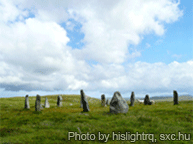
A Celtic ritual circle. Photo by hislightrq, sxc.hu
Halloween, also known as Hallowmas, All Hallow's Eve, and Samhain, hasn't always been the candy-fueled fright fest that seems to dominate American culture in late October. The second oldest unbroken holiday in the world, Halloween has been celebrated continuously for well over 6000 years. (For perspective, Jesus of Nazareth lived nearly 2000 years ago and wooly mammoths largely disappeared around 10,000 years ago—the first celebration of Halloween fell precisely between these two historic milestones.). This mysterious holiday continues to capture our imaginations even thousands of years later, and its history is among the most fascinating holiday stories known to humanity.
The predecessor to Halloween is the pagan holiday Samhain, the Celtic New Year. Samhain is Celtic for "Summer's End," a fitting name for a holiday centered around harvesting and reaping that ushers in winter. Celts used the holiday to begin their year, and it symbolizes both the beginning and ending of all things. The Celts finally enjoyed the harvested fruits of their summer toils and used the opportunity to slaughter weak animals for winter meat.
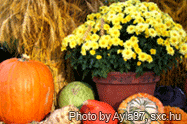
Photo by Ayla87, sxc.hu
As civilization evolved, the Celts began spreading into socially-prevalent feudal fiefdoms and later townships. Technology seeped in, and life no longer revolved solely around the crops. While the harvest festival was still celebrated, it was no longer the pinnacle of the year's labor. Since different crops were harvested on the various farms, it wasn't uncommon for farming families, notably children, to walk door to door exchanging harvested crops. Some historians believe this was the start of modern trick-or-treating as we know it.
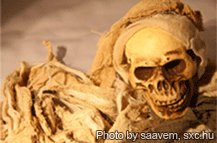
Photo by saavem, sxc.hu
The Celts are also responsible for the ghouls and ghastly characters of today's Halloween. Originally, the Celts would place a skeleton made of turnips and other root vegetables in their home on Samhain. These vegetable skeletons later gave way to the Irish legend of Stingy Jack, a fearsome farmer who crossed the devil with a carved tree trunk. The devil, not taking kindly to Jack's trickery, cursed him to wander forever with a carved turnip that held a lit candle. While Americans had carved pumpkins long before, the frightening faces and shapes became associated with this tradition sometime in the 1800s.

Image by dimitri_c, sxc.hu
Now, Halloween is associated with autumnal symbols such as the falling leaves, scarecrows, and pumpkins. The colors of orange and black are the unofficial hues of the holiday, and imagery of black cats, spiders, bats, ghosts, vampires, and witches were inspired by Gothic horror literature (which also inspired the first Halloween costumes). Children roam the neighborhoods looking for treats, and teenagers in werewolf masks hide out in bushes ready to dole out plenty of tricks.

Photo by donzeladef, sxc.hu
Divination was once the most common Halloween activity. In Ireland and Scotland, apple skins were removed in one long strip and then tossed backwards. The shape of the peel was believed to spell out the first name of the thrower's spouse. In England, unmarried women would sit in a darkened room staring at a mirror on Halloween. If they saw a man's face, it was believed to be their future husband. If they saw a skull, though, they were thought to die before marriage.
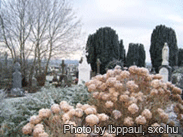
A Celtic cemetery. Photo by lbppaul, sxc.hu
Despite this commercialization, modern witches still believe that that Halloween is a time when the veil between the world of the living and the afterlife is thinnest. It's a time for communicating with the dead, whom the Celts believed freely roamed the Earth during this magical time. Many Samhain rituals focus on calling upon the ancestors for guidance and warnings for the year to come.
Modern witches celebrate Samhain in a variety of ways. Many burn the Maypole, created on Beltane or May Day.
The wishes and desires fused into the Maypole's colorful ribbons are then released and allowed to be fulfilled. Rituals, known as sabbats, are performed at night (instead of during the daylight hours). Some other ways that contemporary witches celebrate the Samhain sabbat include:
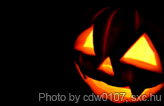
Photo by cdw0107, sxc.hu
- Carving pumpkins and empowering them to repel negativity
- Building shrines to the ancestors
- Practicing divination
- Researching genealogy and building family trees for litanies
- Setting places at the dinner table for the recently deceased
- Placing jack-o-lanterns or crossed brooms at the four quarters
- Building altars out of hay bales
- Visiting the cemetery and placing fresh flowers on tombstones

Photo by somadjinn, sxc.hu
So, the next time you see someone ringing a doorbell and playfully yelling, "Trick or treat!," remember to look to the sky and to thank the Celts. These ancestors helped to create the modern holiday of Halloween, and along with carved turnips and harvest bounties, they've magically turned a simple festival into a marvelous, haunting delight.